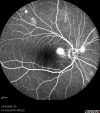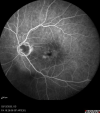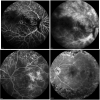Recent Advances and Disputes About Curcumin in Retinal Diseases
- PMID: 34177257
- PMCID: PMC8219301
- DOI: 10.2147/OPTH.S306706
Recent Advances and Disputes About Curcumin in Retinal Diseases
Abstract
Curcumin belongs to the group of so-called phytocompounds, biologically active molecules produced by plants exerting a beneficial effect on health. Curcumin shows a wide spectrum of different properties, being an anti-inflammatory, antioxidant, antimicrobial and antimutagenic molecule. The purpose of the review is to examine what literature reported on the characteristics of curcumin, particularly, on the beneficial and controversial aspects of this molecule, aiming for a better therapeutic management of retinal diseases. The retina is a constant target of oxidative stress, this tissue being characterized by cells rich in mitochondria and by vessels and being, obviously, continuously reached from photons affecting its layers. Particularly, the retinal ganglion cells and the photoreceptors are extremely sensitive to oxidative stress damage and it is well known that an imbalance in reactive oxygen species is often involved in several retinal diseases, such as uveitis, age-related macular degeneration, diabetic retinopathy, central serous chorioretinopathy, macular edema, retinal ischemia-reperfusion injury, proliferative vitreoretinopathy, hereditary tapeto-retinal degenerations, and retinal and choroidal tumors. To date, several studies suggest that oral treatment with curcumin is generally well tolerated in humans and, in addition, it seems to have no negative effects: therefore, curcumin is a promising candidate as a retinal disease therapy. Unfortunately, the primary limitation of curcumin is represented by its poor bioavailability, in fact only a minimal fraction of this substance can reach the blood stream in the form of a biologically active compound. However, many steps have been made in several fields. In the future, it is expected that the strategies developed until now to allow curcumin to reach the target tissues in adequate concentrations could be ameliorated and, above all, large in vivo studies on humans are needed to demonstrate the total safety of these compounds and their effectiveness in different eye diseases.
Keywords: anti-inflammatory proprieties; antioxidant proprieties; exosomes; miRNA; nanosphere; natural compounds.
© 2021 Nebbioso et al.
Conflict of interest statement
The editorial support was funded by Eye Pharma S.p.A. Genova-Italy. The authors report no other conflicts of interest in this work.
Figures








References
-
- Mirzaee F, Hosseinzadeh L, Ashrafi-Kooshk MR, et al. Diverse Effects of Different “Protein-Based” Vehicles on the Stability and Bioavailability of Curcumin: spectroscopic Evaluation of the Antioxidant Activity and Cytotoxicity In Vitro. Protein Pept Lett. 2019;26(2):132–147. doi:10.2174/0929866525666181114152242. - DOI - PMC - PubMed
Publication types
LinkOut - more resources
Full Text Sources

